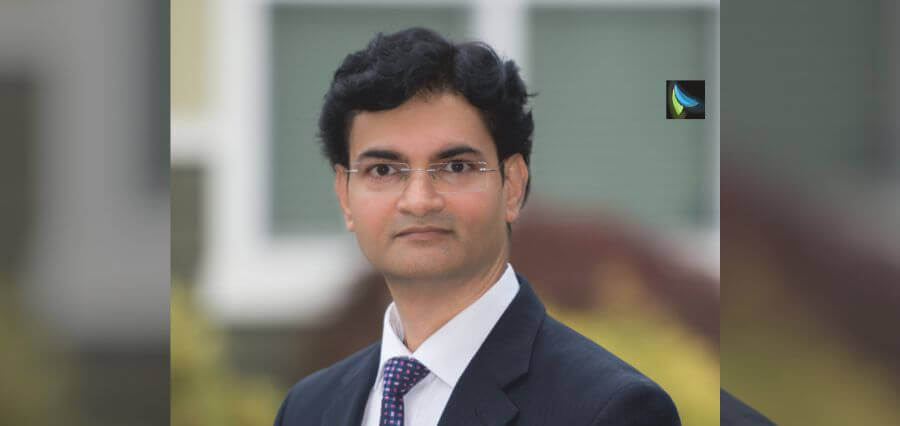Many accomplished problem-solvers trace their passion back to childhood experiences. From an early age, curious minds are drawn to puzzles, riddles, and challenges that spark their imagination and test their ingenuity.
Children naturally encounter problems in their daily lives – from figuring out how to build the tallest block tower to managing social dynamics on the playground. These early challenges, though seemingly simple, lay the groundwork for more complex problem-solving skills later in life.
Similarly, success isn’t just about understanding complex technologies—it’s about applying them to solve real-world problems, says Rahul Chaturvedi, a veteran Staff Software Engineer with nearly 2 decades of experience in the software industry.
His journey into the world of software engineering began with a childhood fascination for problem-solving. This passion led him to one of India’s premier engineering institutions, where he honed his skills and laid the foundation for a remarkable career in the progressive domain of big data and streaming technologies.
With 20 years of experience under his belt, Rahul has become a master at bridging the gap between theoretical knowledge and practical applications. His expertise spans industry-leading solutions like Kafka, Redis, HBase, and Spark, technologies that form the backbone of modern data infrastructure.
Rahul’s impact on the field is far-reaching. He has optimized data pipelines and storage solutions, leveraging Kafka’s real-time capabilities and Redis’s in-memory prowess to ensure efficient data flow and retrieval. His work with HBase and Spark has helped organizations unlock valuable insights from massive datasets, driving data-driven decision-making across industries.
But his contributions extend beyond individual technologies. He excels at crafting the bigger picture, designing and implementing reliable, scalable, and highly available big data platforms. His deep understanding of distributed systems and fault tolerance ensures these platforms can handle ever-growing data volumes without compromising performance or uptime. As a champion of cloud adoption, Rahul has successfully guided organizations through the complex process of migrating big data and analytics solutions to the cloud. This transition has unlocked new levels of agility and cost-efficiency, allowing businesses to scale their data infrastructure effortlessly.
Throughout his career, Rahul has nurtured a culture of innovation and collaboration, empowering teams to leverage cutting-edge technologies to their full potential. His leadership has demonstrably helped organizations achieve significant improvements in data management, analytics, and overall operational efficiency.
As the big data landscape continues to evolve, Rahul stands at the forefront, ready to tackle the challenges of tomorrow with the wisdom gained from two decades of hands-on experience. Let us learn more about his journey:
Elevating Technical Expertise
Rahul diligently follows technical blogs, journals, and publications by thought leaders in the tech industry. This allows him to stay abreast of the latest trends, innovations, and best practices in his field.
- Engaging with Industry Experts: Attending industry conferences and webinars enables Rahul to learn from experts, network with peers, and gain firsthand insights into cutting-edge technologies. Some of his favorite events include Google Cloud Next, Kafka Summit, and Redis Conf. Additionally, his memberships in prestigious societies such as IEEE, the Singapore Computer Society, and the Scholars Academic and Scientific Society provide valuable opportunities to connect with top talent and exchange knowledge and experiences with fellow professionals.
- Hands-on Exploration and Personal Projects: Rahul engages in hands-on projects and hackathons, as dedicating time to personal projects using new technologies is a great way for him to gain practical experience and solidify his understanding.
Example: Rahul has accumulated extensive experience in the domains of Big Data, Microservices, and Cloud technologies over several years. During his tenure at GE Healthcare and Athenahealth, he played a pivotal role in architecting and constructing a real-time data ingestion and analytics platform hosted on Azure Cloud. This platform leveraged cutting-edge technologies including Apache Kafka for scalable data streaming, HBase for NoSQL data storage, and Spark for real-time data processing and analytics. By harnessing the capabilities of Azure Cloud, Rahul ensured robust scalability, reliability, and performance for processing large volumes of data efficiently, enabling timely insights and decision-making capabilities for healthcare analytics and operations.
Architecting Scalable and Efficient Software Solutions
With nearly 20 years of expertise, Rahul specializes in designing secure, scalable, and cost-effective solutions for cloud-based enterprises. He has extensive experience in architecting advanced, customized software solutions for SaaS businesses.
Rahul’s approach to scalability involves understanding business goals, analyzing existing architectures, adopting scalable designs and distributed systems, selecting appropriate technologies, optimizing performance, and implementing robust monitoring and auto-scaling mechanisms.
When approaching scalability challenges, the first step is to identify the bottleneck, whether it’s processing power, storage, or network limitations. Analyzing usage patterns helps pinpoint areas that need more resources.
Next comes choosing the right strategy. Horizontal scaling involves adding more servers to distribute workloads, while vertical scaling focuses on upgrading existing hardware. Code optimization and caching can also improve efficiency. Designing for maintainability with modular components allows for easier scaling of individual parts without impacting the whole system. Finally, continuous monitoring and performance testing are crucial to identify and address potential bottlenecks before they become critical.
Approach to Effective Team Leadership
Rahul’s leadership style centers on cultivating a clear vision, fostering open communication, and efficiently allocating tasks. He prioritizes building trust through transparent dialogue, ensuring that everyone comprehends the project’s objectives and their respective roles in achieving them. By setting distinct goals and developing a detailed roadmap, Rahul keeps the team aligned and focused.
Regular meetings and the utilization of collaborative tools, such as Slack and Jira, facilitate seamless communication and coordination within the team. Rahul assigns tasks based on the strengths and career development goals of team members, clearly defining expectations and deliverables.
To foster a collaborative environment, Rahul encourages team members to share ideas and provide feedback. He offers guidance and support to help them overcome any challenges they may face. Continuous monitoring of progress and adaptability to changes ensure the project remains on track.
Navigating Team Dynamics
Rahul understands that conflicts and disagreements within a team are inevitable. However, he approaches these challenges with a keen focus on active listening, empathy, and open communication. His goal is to foster a positive environment where team members feel heard and respected, enabling them to collaboratively develop effective resolutions.
In a recent project, Rahul encountered a disagreement between two developers regarding the implementation approach for a critical feature. One preferred a more traditional, proven method, while the other advocated for a newer, more innovative solution. He facilitated a meeting where both team members could present their arguments. He then guided the team in weighing the pros and cons of each approach, ultimately leading them to a hybrid solution that incorporated the strengths of both methods. This not only resolved the conflict but also enhanced the feature’s overall quality, leaving the team members feeling valued and understood.
Rahul’s approach to handling conflicts or disagreements within a team is rooted in his ability to prioritize understanding each team member’s perspective and finding common ground. By creating a space for open dialogue and collaborative problem-solving, he ensures that everyone’s voice is heard and respected, paving the way for successful project outcomes.
The Intersection of Software Engineering, Machine Learning, and Artificial Intelligence
Rahul has a strong foundation in machine learning (ML) and artificial intelligence (AI) through formal courses during his master’s program, which he has applied to various personal projects. While his primary professional experience has focused on developing big data ingestion, storage, and streaming platforms, he has leveraged this background to support ML and AI initiatives.
His work often involves collaborating closely with ML and AI engineers and scientists, providing them with the robust data pipelines and processing capabilities they need to build and deploy effective models. This collaboration has given him valuable insights into the practical challenges of implementing ML and AI solutions and the critical role of high-quality, accessible data in these endeavors.
Looking to the future, Rahul sees ML and AI technologies continuing to evolve rapidly, becoming more integrated into diverse aspects of our daily lives and industries. As these technologies advance, the ability to handle and process vast amounts of data will remain paramount. Therefore, software engineers must develop skills in big data technologies, distributed computing, and data engineering.
Additionally, a solid understanding of ML algorithms, model training, and evaluation processes will become increasingly essential. Familiarity with tools and frameworks such as TensorFlow, PyTorch, and Spark, along with knowledge of cloud platforms and services, will be crucial for engineers looking to contribute effectively to ML and AI projects.
The combination of Rahul’s expertise in big data technologies, distributed computing, and data engineering, coupled with his deep understanding of ML and AI, makes him a valuable asset in the rapidly evolving world of technology. As the demand for professionals who can bridge the gap between data engineering and machine learning continues to grow, his multifaceted skill set ensures that he remains at the forefront of his industry, poised to tackle the challenges of tomorrow.
Streamlining the Software Development Lifecycle
Rahul has leveraged a suite of cutting-edge technologies to optimize his development workflow. He has utilized Kubernetes for container orchestration, Docker for containerization, and CI/CD tools such as Jenkins to automate and streamline the software delivery process.
Kubernetes has enabled Rahul to manage scalable deployments and facilitate efficient resource utilization across diverse environments. Docker, on the other hand, has allowed him to package applications and their dependencies into portable containers, ensuring consistency from development through production.
Integrating Jenkins with Kubernetes, Rahul has automated the build, test, and deployment pipelines, significantly reducing manual intervention and enabling continuous integration and continuous delivery of software updates. This holistic approach has collectively enhanced productivity, improved deployment efficiency, and maintained robustness in delivering high-quality software solutions.
The Quintessential Software Engineer
The most important qualities for a software engineer to possess include problem-solving skills, effective communication, adaptability, and a commitment to continuous learning. Problem-solving skills are crucial for tackling complex technical challenges and developing innovative solutions. Effective communication is essential for collaborating with team members and translating technical issues to non-technical stakeholders. Adaptability ensures that an engineer can handle changing requirements and technologies, while a commitment to continuous learning keeps their skills and knowledge up-to-date.
Additional Vital Qualities: As a seasoned software engineer, Rahul would like to add another couple of very important qualities: strategic thinking and leadership. Strategic thinking allows for the design of scalable and sustainable architectures that align with business goals. Rahul’s extensive technical expertise ensures he can make informed decisions about technology stacks and architectural patterns. Leadership involves mentoring junior engineers and guiding teams towards successful project delivery.
Embodying the Qualities: In his role, Rahul embodies these qualities by consistently designing robust, scalable architectures that address both current and future needs. He leverages his technical knowledge while adapting to new technologies to select the best tools and practices, ensuring high performance and reliability. Rahul leads by example, fostering a culture of collaboration and continuous improvement within his team.
Additionally, he maintains clear and open communication channels with all stakeholders, ensuring that technical and business perspectives are aligned, which results in smoother project execution and long-term success.
A Roadmap for Aspiring Professionals
Rahul, a seasoned expert in the field, shares his insights with aspiring professionals. He emphasizes the importance of prioritizing continuous learning and adaptability in a rapidly evolving technological landscape. Rahul stresses the significance of building a solid foundation in computer science fundamentals and problem-solving skills, which serve as the cornerstones of a successful career.
He encourages seeking practical experience through internships, projects, or contributions to open-source software, as these opportunities provide invaluable hands-on learning. Rahul highlights the growing emphasis on teamwork in software development and the necessity of cultivating strong communication and collaboration skills. Finally, he underscores the value of maintaining a growth mindset, embracing challenges, and continuously exploring new avenues for innovation and improvement within one’s craft.



















